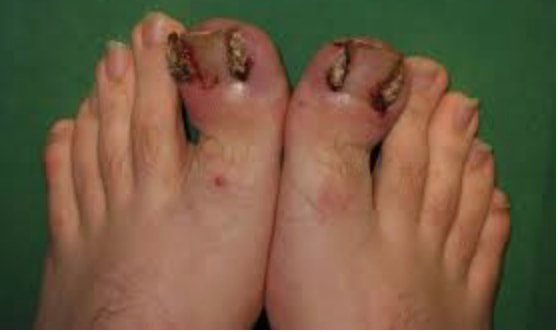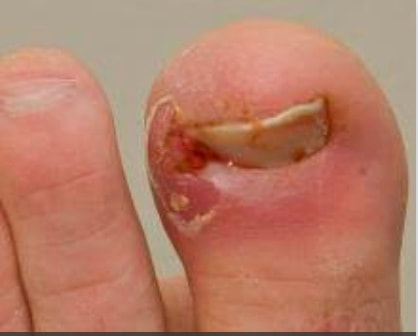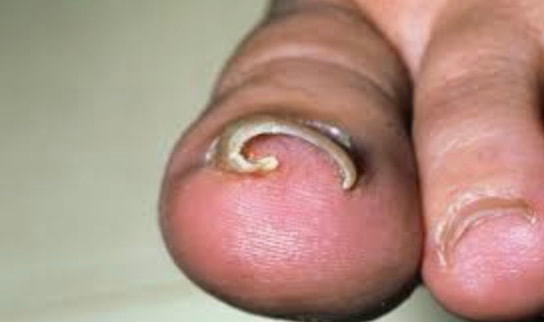What Is an Ingrown Toenail?
When a toenail is ingrown, it is curved and grows into the skin, usually at the nail borders (the sides of the nail). This digging in of the nail irritates the skin, often creating pain, redness, swelling and warmth in the toe.
If an ingrown nail causes a break in the skin, bacteria may enter and cause an infection in the area, which is often marked by drainage and a foul odor. However, even if the toe is not painful, red, swollen or warm, a nail that curves downward into the skin can progress to an infection.
After examining the toe, we will select the treatment best suited for you. If an infection is present, an oral antibiotic may be prescribed.
Sometimes a minor procedure, performed in the office, will ease the pain and remove the portion of the offending nail. After applying "cold spray" or a local anesthetic, the doctor removes part of the nail’s side border. Some nails may become ingrown again, requiring permanent removal of the nail root.
Following the nail procedure, a light bandage will be applied. Most people experience very little pain after the procedure and may resume normal activity the same day. Children often can participate in their sport the same day.
Call for an appointment today.
When a toenail is ingrown, it is curved and grows into the skin, usually at the nail borders (the sides of the nail). This digging in of the nail irritates the skin, often creating pain, redness, swelling and warmth in the toe.
If an ingrown nail causes a break in the skin, bacteria may enter and cause an infection in the area, which is often marked by drainage and a foul odor. However, even if the toe is not painful, red, swollen or warm, a nail that curves downward into the skin can progress to an infection.
After examining the toe, we will select the treatment best suited for you. If an infection is present, an oral antibiotic may be prescribed.
Sometimes a minor procedure, performed in the office, will ease the pain and remove the portion of the offending nail. After applying "cold spray" or a local anesthetic, the doctor removes part of the nail’s side border. Some nails may become ingrown again, requiring permanent removal of the nail root.
Following the nail procedure, a light bandage will be applied. Most people experience very little pain after the procedure and may resume normal activity the same day. Children often can participate in their sport the same day.
Call for an appointment today.



